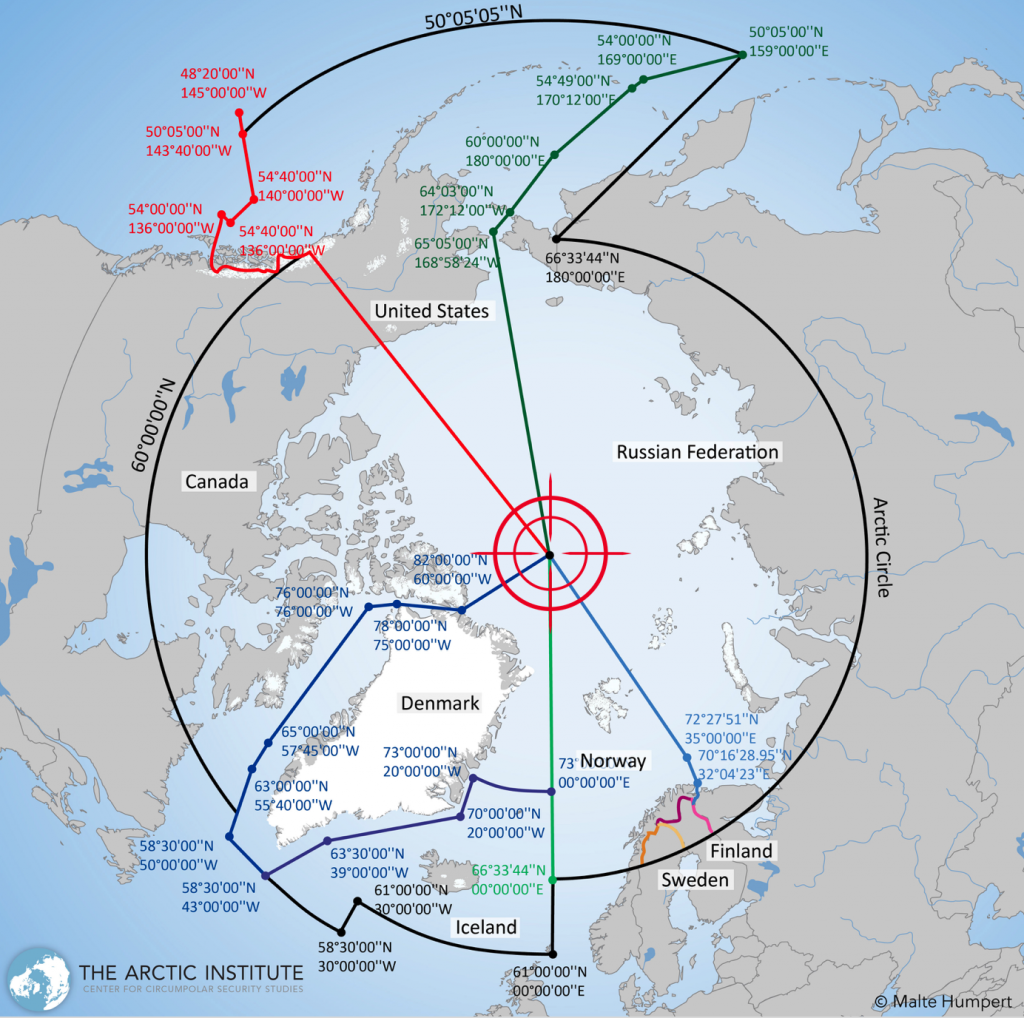The Arctic Heats Up More Ways Than One

Graphic Courtesy Maite Humpert / The Arctic Institute
On Saturday, Russia fired a nuclear-capable missile from the North Pole
The Arctic was heating up enough, but a new element was added on Saturday, August 24th. According to Forbes.com the Russians launched a missile capable of carrying a nuclear weapon, from a submarine at the North Pole (in the red target crosshairs).
Of course the Arctic was already heating up from climate change, at double or triple the average global warming rate. That’s the force melting the ice, both the frozen sea ice and the ice on land. It’s the latter that matters for sea level rise.
Then there was the diplomatic ‘heat up’ ten days ago with the story that President Trump wanted to buy the nation of Greenland from the Kingdom of Denmark which was immediately rejected by both governments. Almost certainly his interest included natural resources, particularly the rare earth minerals – something we need for modern electronics. Perhaps even more importantly, it was a way to counter the growing Chinese interest in Greenland. But for now, the controversy has just raised diplomatic heat.
Now with the missile launch, there’s a third “heating up.” As you can see on the map above, Russia is one of five nations whose sovereign lines meet at the North Pole – Canada, The United States, Norway, and Greenland (part of the Danish Kingdom) being the others. Finland, Iceland, and Sweden are the other three Arctic nations, defined as having territory within the Arctic Circle.
Over the last few years, Russia has taken the stance that it has exclusive claim to the North Pole. The claim is based on ambiguous issues about water depths (bathymetry) that connect a relatively shallow underwater area around the geographic north pole to their territory. As reported in a NY Times article in August 2007, they planted an underwater “flag” on the seabed at the North Pole as part of that territorial claim. Those rules establishing territorial limits come from the UN Convention on Law of the Sea, which is further complicated since the US still has not signed it, for going on four decades due to an inane stance by four Senators, but that’s a topic for another day. With the missile launch there is little doubt that Russia wants to redraw the territorial boundaries of the Arctic. That is a huge problem.
Overall the Arctic presents a very “high-stakes game” of strategy, which I recently wrote about here, China and U.S. Vie for Greater Greenland Presence. All eight Arctic nations will be involved. China (and Korea) are not legally involved, but have a major stake for global strategic reasons. For one, shipping traffic will continue to increase on the shorter northern route, as the Arctic Ocean continues to thaw.
But almost every nation now has an interest in the “high Arctic” due to implications for the global supply chain, the dramatic changes to world weather as the Arctic thaws, and now the potential hostile actions as Russia tries to change the map and China looks for a way to assert itself in the hot spot of the 21st Century.
This drama could heat up quickly. I will be there with a group in just two weeks and will report back with any new insights.
